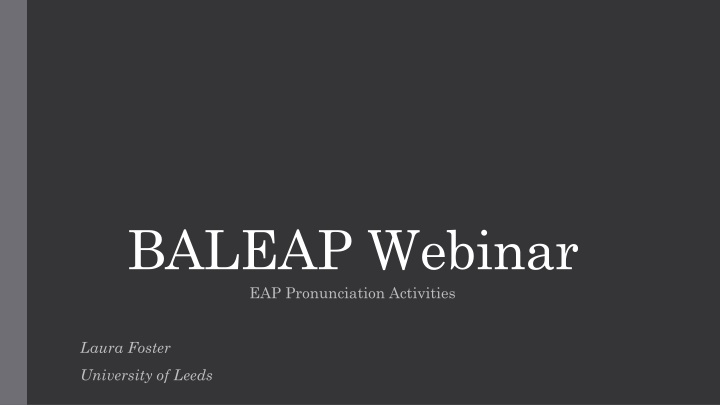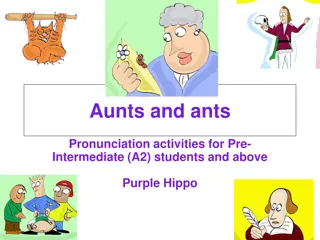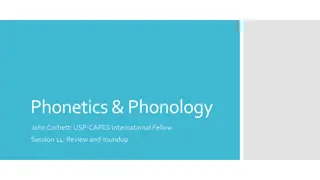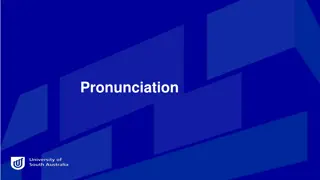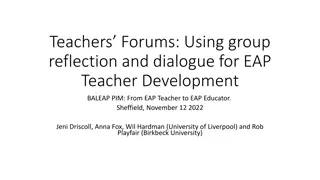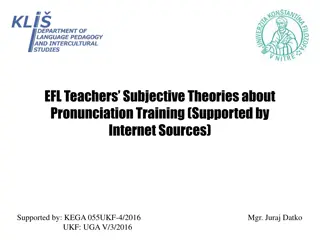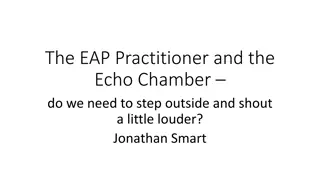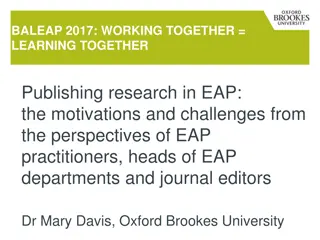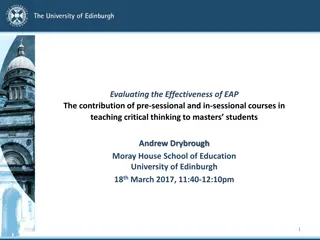Effective Pronunciation Activities for EAP Learners
Explore innovative pronunciation activities for EAP learners focusing on diphthongs and nuclear stress. Discover strategies to contrast sounds across languages, provide visual cues, and integrate nuclear stress training into assessment preparation. Utilize methods like correction through non-verbal cues, face diphthongs, and awareness-raising activities for sentence stress correction. Empower students to analyze and correct their pronunciation through practical exercises. Enhance prosodic features without prior knowledge through a structured recording and practice procedure.
Download Presentation

Please find below an Image/Link to download the presentation.
The content on the website is provided AS IS for your information and personal use only. It may not be sold, licensed, or shared on other websites without obtaining consent from the author.If you encounter any issues during the download, it is possible that the publisher has removed the file from their server.
You are allowed to download the files provided on this website for personal or commercial use, subject to the condition that they are used lawfully. All files are the property of their respective owners.
The content on the website is provided AS IS for your information and personal use only. It may not be sold, licensed, or shared on other websites without obtaining consent from the author.
E N D
Presentation Transcript
BALEAP Webinar EAP Pronunciation Activities Laura Foster University of Leeds
Contrasting areas and activities Diphthongs Why? -Contrast across languages, particularly Arabic and Chinese -Existing learner phonological systems What? -Visual/physical cues -Immediate and unobtrusive -Indication not repetion
Contrasting areas and activities Nuclear stress Why? - Can cause strain on listener and alter meaning - Difficult to pick up - Part of LFC (Lingua Franca Core) What? - Learner training - Integrated into assessment preparation - Transferable to other features of prosody
Diphthongs in real-time Situation During any normal class Activity Using non-verbal, physical cues to unobtrusively correct diphthongs Example Student mispronounces fair /fe / as fear /f / Teacher highlights correct sound by pointing to their hair and indicates mouth shape/movement without speaking.
Face diphthongs This method allows students to access their own individual diphthong production using familiar vocabulary, rather than imitating the tutor s production of the diphthongs.
Nuclear stress in assessment task prep Situation During preparation for presentations/seminars Activity Awareness raising activity to correct sentence stress Example Students are at the practice stage in preparing for assessed presentations but delivery is impeded by inappropriate stress. Students analyse their own speech for nuclear stress then check, correct and practice with corrected stress.
Procedure 1. Record Using their phone 2. Transcribe Grammar/lexis only 3. Analyse for nuclear stress Transcription, not recording 4. Check against recording 5. Practice With correct stress This procedure assumes no prior knowledge of prosodic features but integrates space into assessment preparation for addressing these features in class.
Alternatives Intonation and pitch contouring Rhythm and pace Weak forms
